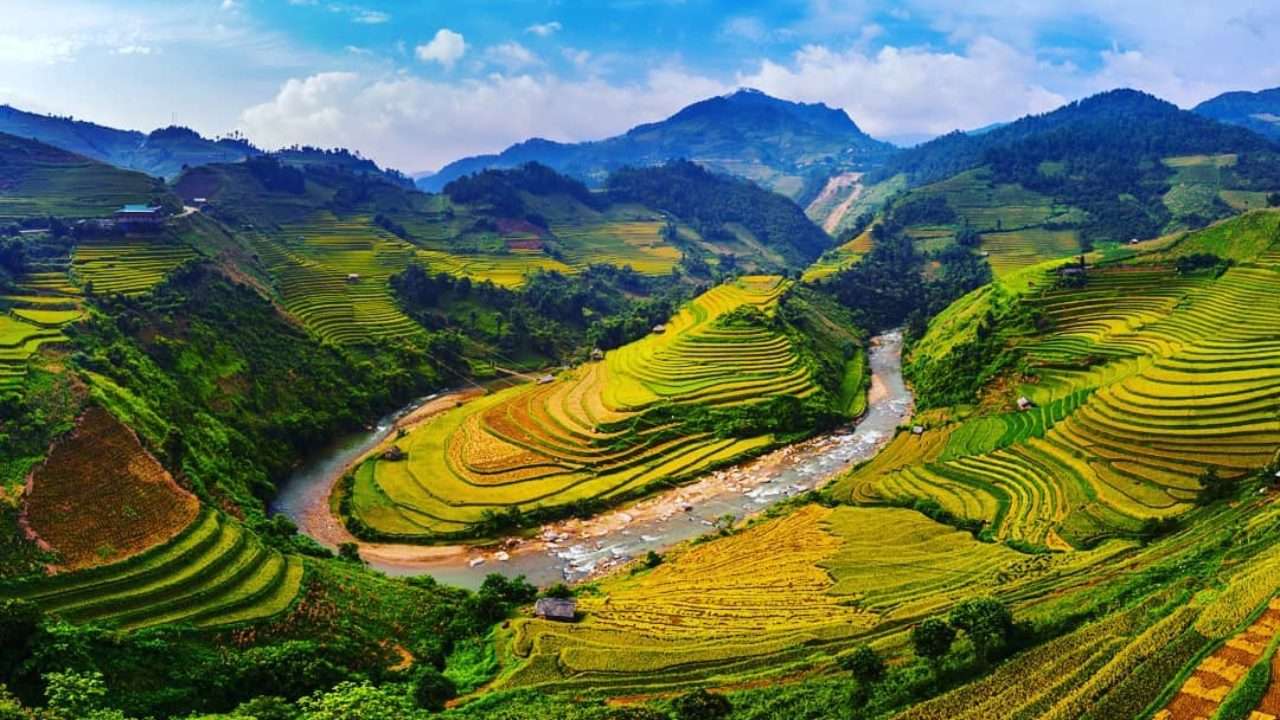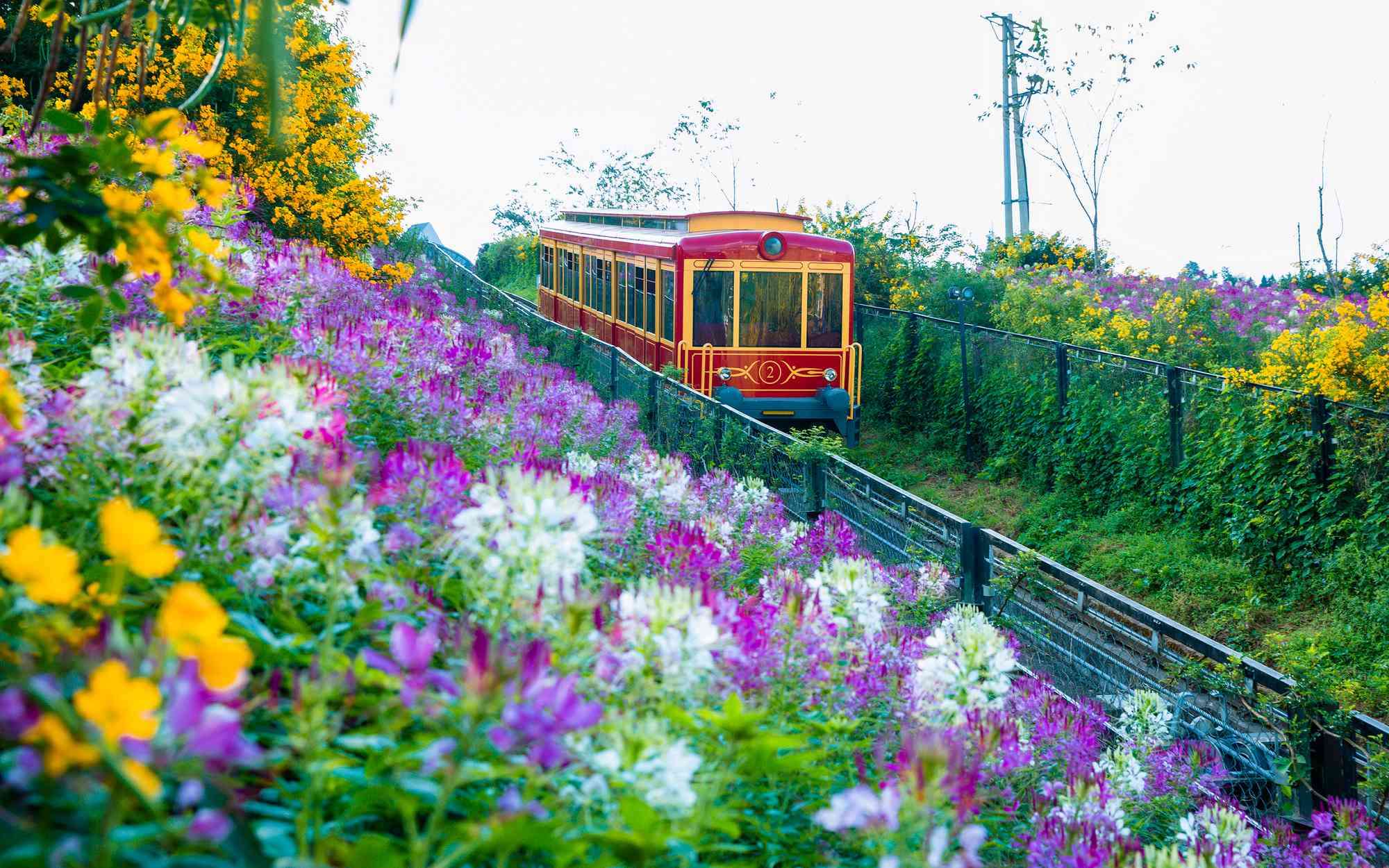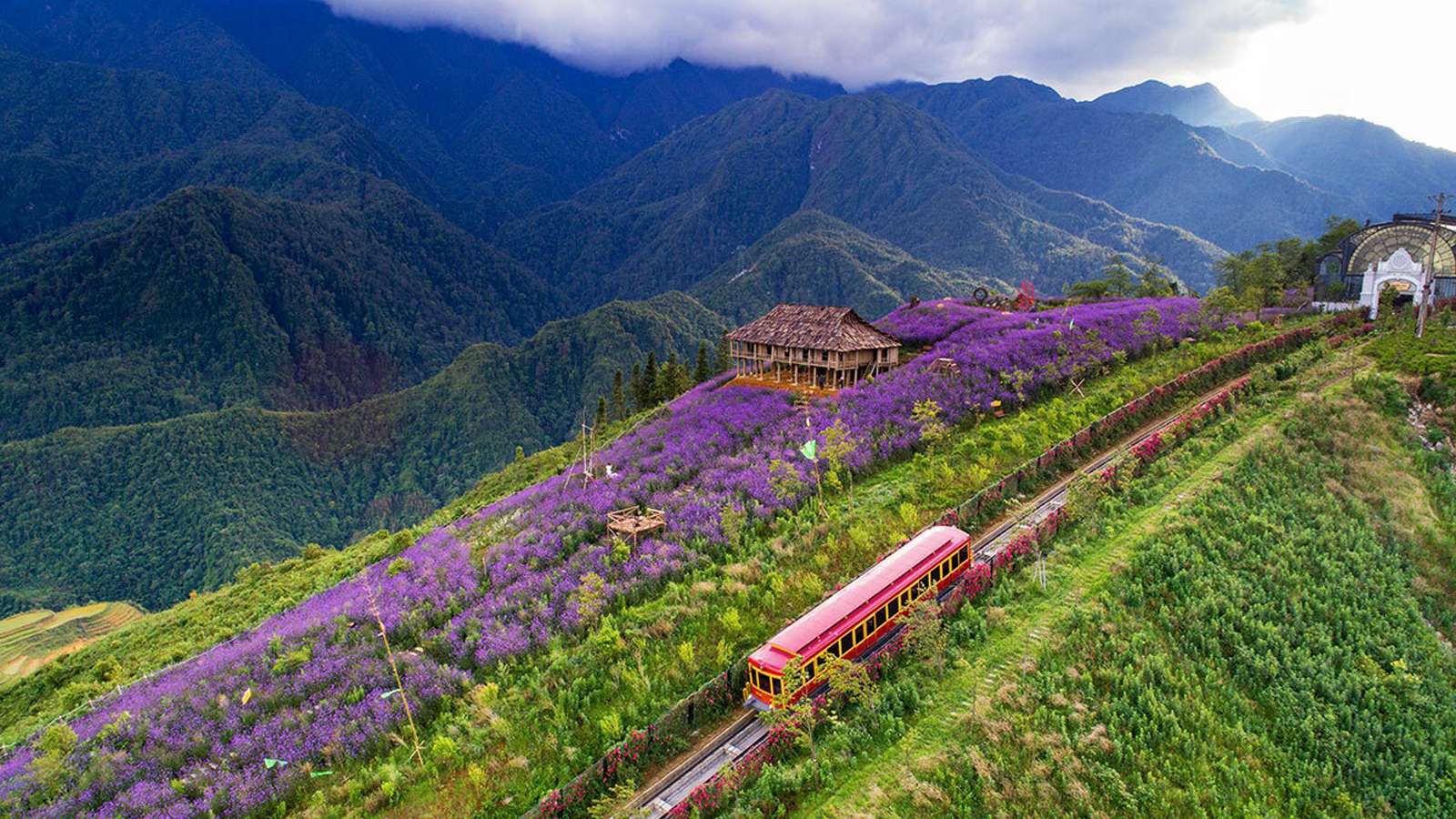Passing through misty mountain ranges in Vietnam’s Northwest, travelers arriving in Sapa will find themselves stepping into Muong Hoa Valley—a realm seemingly far from reality. Like a breathtaking painting crafted by the skillful hands of nature, Muong Hoa gently serenades the soul with its tranquil beauty, nestled deep within the mountainous wilderness.

1. How to Get to Muong Hoa Valley
Located about 8 kilometers southeast of Sapa town, Muong Hoa Valley lies in Hau Thao commune, Lao Cai province. Every year, this scenic gem attracts numerous tourists with its poetic charm. To reach the valley, visitors must traverse a mountain pass that winds along a tall ridge, with steep roads that require steady driving skills.
For many who love the misty town of Sapa, Muong Hoa Valley is like a unique delicacy—vivid and vibrant, standing out against the silver mist and white clouds that define the area. But enjoying this unique “delicacy” isn’t easy: you need to ascend high, find a mid-mountain viewpoint to fully appreciate the mystical green maze laid out before you.
In the past, tourists would hike up to these heights for a panoramic view. But now, not everyone has the strength or time to seek out beauty this way. That’s why the Muong Hoa Mountain Train has become a popular attraction, giving both local and international travelers the chance to take in sweeping views from 1,600 meters above sea level—especially during rice season.

2. What Makes Muong Hoa Valley So Beautiful?
When people mention Muong Hoa Valley, two standout features always come to mind: the mesmerizing terraced rice fields and the mysterious ancient rock field.
🌾 Majestic Terraced Rice Fields
Sapa boasts many terraced fields, but the most beautiful and expansive are undoubtedly found in Muong Hoa Valley. Only by witnessing them firsthand can one truly understand why Sapa’s terraced fields are considered among the most stunning in the world. These rice paddies gracefully curve along the hillsides, forming perfect, bowl-like slopes that captivate the eye.
- In the summer, as the rice grows, the fields are lush and vibrant—like green silk ribbons winding through the valley.
- Come autumn, the valley is draped in golden hues as the rice ripens, shimmering like it’s been gilded with gold. It feels like walking on stairways to heaven—an awe-inspiring sight rarely found elsewhere.
- Even during the flooding season, when the water reflects the sky, the terraces hold a unique, enchanting charm.
🪨 The Mysterious Ancient Rock Field
Discovered over a century ago, the Sapa Ancient Rock Field spans about 8 square kilometers with nearly 200 stones scattered throughout the valley. Many of these rocks bear strange shapes, sandstone formations, and mysterious carvings whose origins and meanings remain unknown. Symbols such as terraced fields, human figures, stilt houses, paths, and even ancient scripts have been etched into the stones. Some carvings are so abstract they baffle researchers and visitors alike.
This rock field is a priceless cultural heritage of both the Northwest region and Vietnam. Over the years, it has continued to intrigue and draw crowds of both domestic and international tourists.
🌊 The Flowing Hoa Stream
Another highlight of Muong Hoa Valley is the picturesque Hoa Stream, stretching about 15 kilometers through the valley. Like a soft silk ribbon nestled between rice terraces, the stream winds through Lao Chai, Ta Van, and Hau Thao communes before ending at Ho Village. During harvest season, golden rice reflects on the crystal-clear waters, blending with the blue sky to create a magical, dreamlike scene.

3. Best Time to Visit Muong Hoa Valley
Muong Hoa Valley offers a unique beauty in every season:
- March to May: Ideal weather—cool, sunny mornings and refreshing, crisp nights. The terraced fields are a vibrant green, perfect for nature lovers and photographers.
- September to November: A golden spectacle as the rice ripens. The valley glows under the sunlight, filled with the aroma of harvest. This is arguably the most stunning time to visit.
- December to February: A chance to witness snowfall and feel the chill of the northern highlands. It’s a romantic, wintery escape.

Visiting during the Lunar New Year, you can also join community festivals hosted by the local ethnic groups such as the Red Dao, Giay, and H’mong. These cultural events offer an authentic glimpse into their fascinating way of life.
Muong Hoa Valley is often compared to a green gem hidden in the mountains, and it remains one of the most alluring destinations in Sapa. If you ever visit this misty highland town, make sure Muong Hoa is on your itinerary—you won’t regret it.
